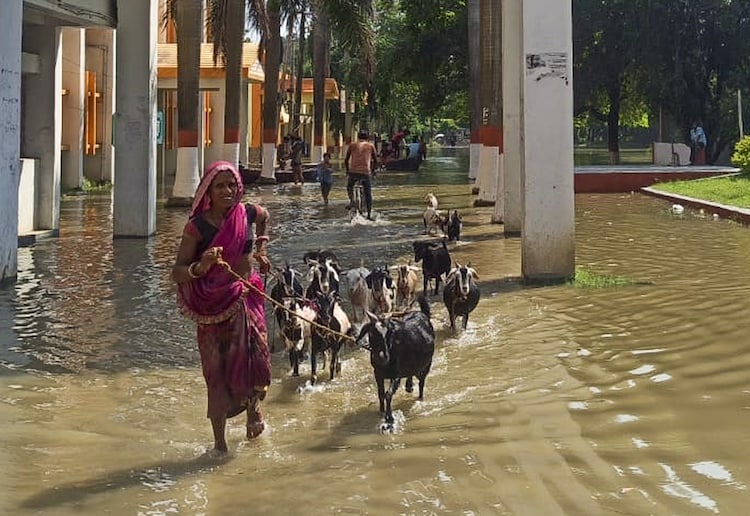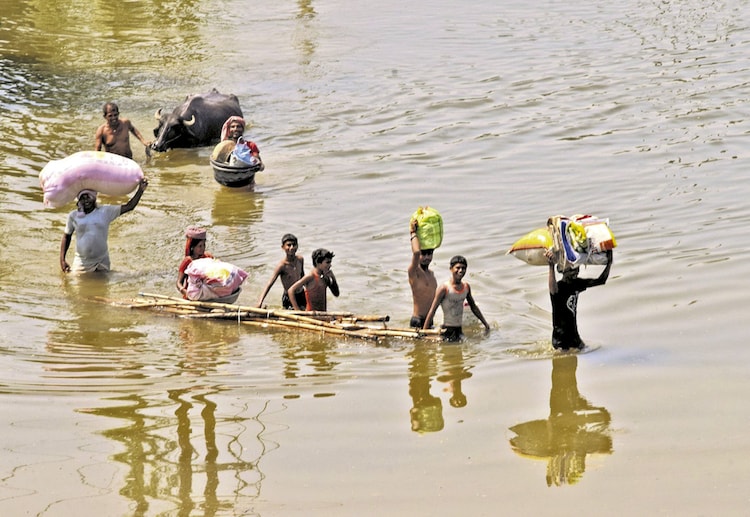Bihar floods: How can it become a breeding ground for diseases?
The flood crisis in Bihar has turned into a major health concern. Stagnant water from broken rivers can become a breeding ground for waterborne and vector-borne diseases.

The flood crisis in Bihar has become a serious health concern as the stagnant water of broken rivers like Kosi, Gandak and Bagmati creates a fertile environment for waterborne diseases.
Nearly one million people have been affected and embankments have been washed away, with the displaced population forced to live in overcrowded relief camps with limited sanitation.
Spread of waterborne, vector-borne diseases
In such conditions, diseases such as cholera, dysentery and typhoid can spread rapidly, as floodwaters often mix with sewage, contaminating drinking water sources.
Mosquito breeding also increases in waterlogged areas, increasing the risk of vector-borne diseases like malaria and dengue, especially in districts like West Champaran and Darbhanga.
Heavy rains from Nepal and swollen rivers have worsened flood conditions in northern Bihar, inundating large swaths of farmland and making access to health care difficult.

Relief efforts by the National and State Disaster Response Forces (NDRF and SDRF) are ongoing, yet the sheer scale of the crisis raises concerns about the spread of the infection.
According to the National Center for Disease Control, the state is prone to climate-sensitive diseases such as waterborne diseases (acute diarrhoea), food-borne diseases (hepatitis, bacillary dysentery, typhoid), vector-borne diseases (dengue, malaria, Japanese influenza). encephalitis) and acute respiratory illnesses.
effects of poor hygiene
Poor drainage and sanitation infrastructure in flood-affected areas has exacerbated the problem, making public health interventions critical to contain outbreaks.

According to an article published in a peer-reviewed journal, Bihar’s rural drinking water supply largely depends on groundwater, which can easily become contaminated during floods.
Climate change and tropical diseases
Over the past decade, climate change has not only increased the incidence of floods and droughts in Bihar, but also increased tropical diseases such as lymphatic filariasis (elephantiasis), dengue and kala azar.
Kala-azar is a parasitic disease caused by Leishmania parasites and spread through the bite of sand flies. It mainly affects the spleen, liver and bone marrow, causing fever, weight loss and anemia. It is endemic to parts of India, especially Bihar and Jharkhand.

Elephantiasis, or lymphatic filariasis, is another parasitic infection caused by microscopic worms transmitted by mosquito bites.
It leads to severe swelling, usually in the legs, arms or genital area, due to damage to the lymphatic system. This causes the skin to thicken and body organs to enlarge, severely impairing mobility.
The highest incidence of kala azar in India has been reported in Bihar, where 335 cases were reported in 2023 and 175 cases in 2024.
The combination of overcrowded relief camps, water pollution and poor sanitation could lead to a large-scale outbreak, further complicating the recovery process.





